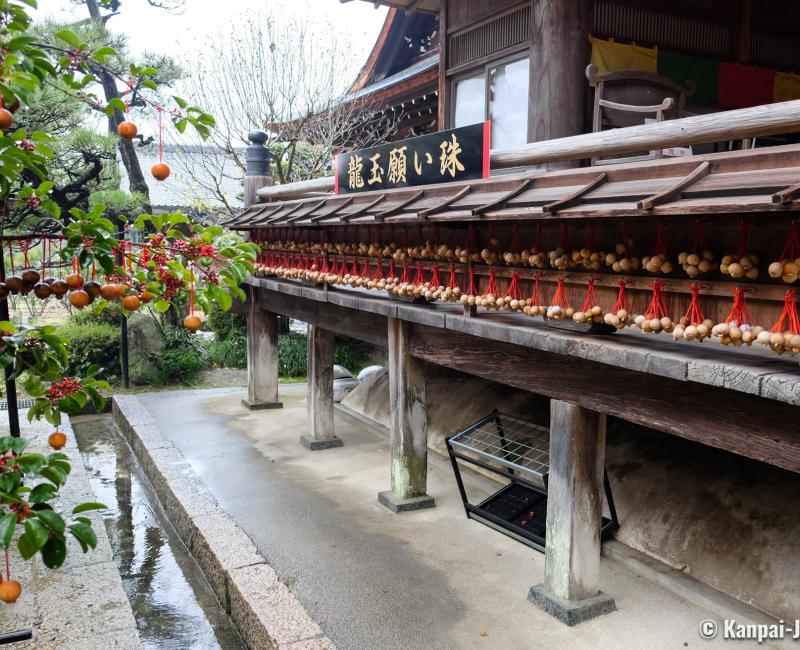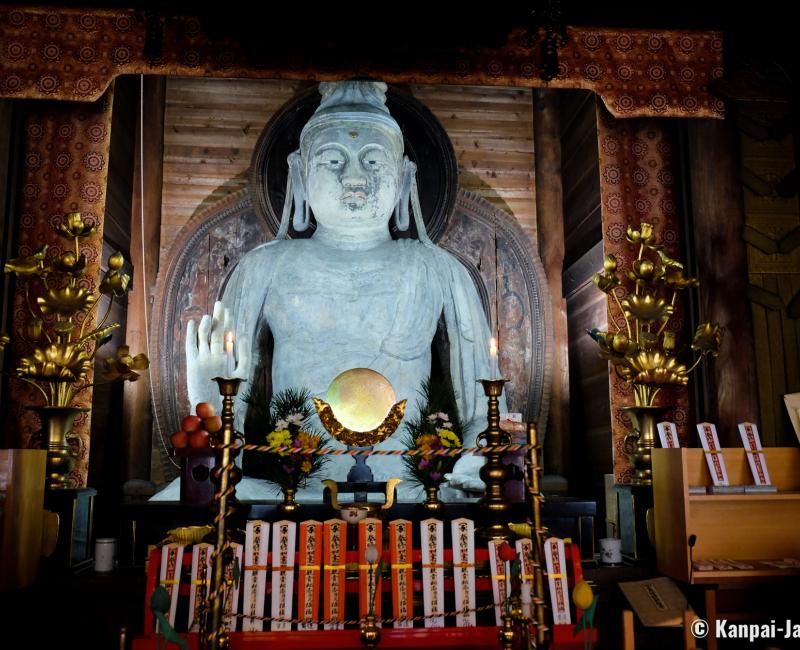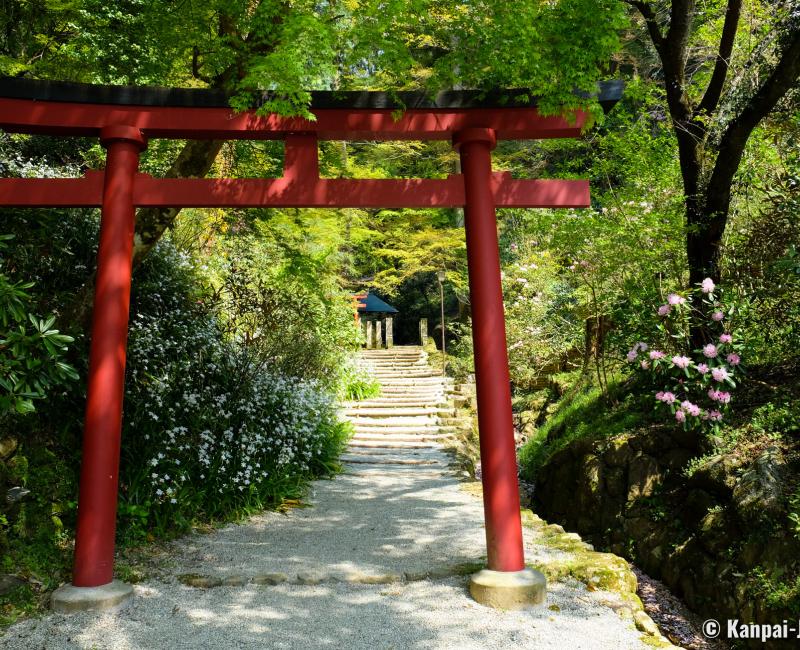Oka-dera
The Protecting Dragon’s Temple in Asuka
Oka-dera is a Buddhist temple of the Shingon esoteric school, located on the heights of Asuka village, in Nara prefecture. It shelters a large statue of Nyoirin Kannon and its dragon balls are talismans for worshippers. The visit is particularly recommended in spring as well as in autumn, when the landscape displays marvelous colors.
Oka-dera, officially named Ryugai-ji (from the words ryu for "dragon" and gai for "lid"), was founded by Buddhist monk Gien in 663.

A legendary dragon that became the temple’s benefactor
The legend tells that the region’s terror, a dragon, was trapped by the monk in a pond which he covered with a stone. The temple was built around the said pond, and still exists nowadays, not far from the main pavilion.
Over time, the dragon mollified to become the protector of the place, and was also able to grant the worshippers’ wishes. Oka-dera is thus renowned as one of the first and most important temples for exorcism in Japan, to ward off demons and drive away misfortune, yaku (厄) in Japanese.
In front of the temple’s main hall, countless small wooden balls are suspended to the trees and structures. They are used in the same way as ema votive plates to pray for having one’s wish granted. Oka-dera is intimately linked to its godly dragon, so the wooden balls are called ryutama (龍玉) in Japanese, which means "dragonball".
It is said that the temple’s legend has inspired Akira Toriyama when he created his famous manga Dragon Ball. Aficionados can go to Oka-dera and try gathering the seven dragon balls to make a wish!

The great Buddha of the Shingon School
The entrance of the temple’s grounds is secured by Niomon Gate, built in 1612. On each side, the two famous Nio guardian deities stand:
- The one on the right, with its opened mouth, symbolizes birth,
- The one on the left, with its closed mouth, symbolizes death.
A flight ✈️ of stairs leads to an esplanade where are gathered most of the temple’s pavilions.
On the way, a side stairway leads to the foot of Sanjunoto, the three-story pagoda standing above the surroundings and offering an unobstructed view on Asuka and the countryside. The pagoda was burnt down in 1472, but reconstructed in 1986 to commemorate the 1,150th anniversary of the death of Kukai or Kobo-Daishi, who was the founder of the Buddhist Shingon School.
The main hall hondo is renowned for sheltering the greatest dried clay Buddha statue in the world. The statue represents a seating Nyoirin Kannon bodhisattva and measures almost five meters high. It is said that monk Kukai himself sculpted it in the 8th century, by mixing clay from Japan, but also from China and India. Placed overhead on its sides, two Fudo Myo-o statues bare their fangs.

The best seasons to visit Oka-dera
Nestled in the forest, under the protective shadow of the trees, Oka-dera’s outer enclosure is relaxing all year long, and particularly beautiful:
- In autumn, with its admirable the maple trees tunnel (momiji 🍁) and its red leaves (koyo), and,
- In spring 🌸, with 3,000 rhododendron in bloom as well as countless peonies.
The temple is a little bit remote from Asuka’s downtown, but is a must-see of the area, with the highlight of an authentic great Buddha statue and largely ignored by tourists.

